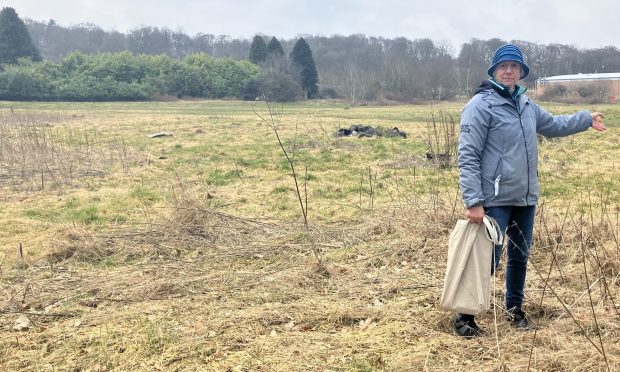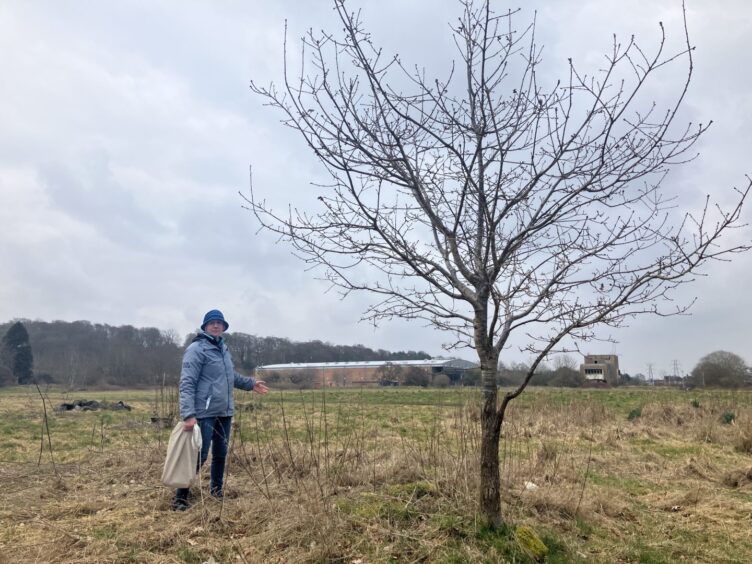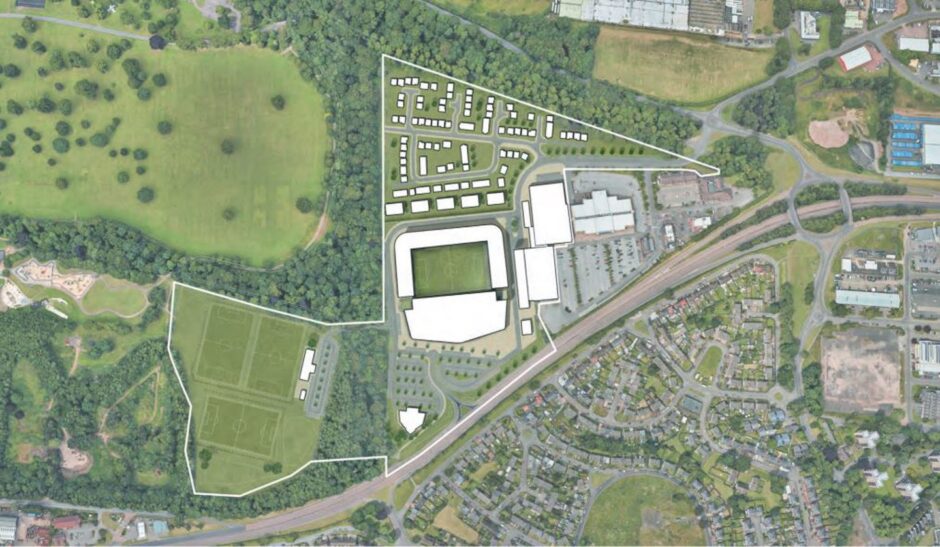A derelict area of abandoned grass could be set to undergo one of the biggest transformations in Dundee’s history.
John Nelms and Dark Blue Properties are leading the charge to construct a Dundee FC stadium development west of the Camperdown Leisure Park.
Around 29 acres of land to the north of the Kingsway could look very different in years to come.
Among the proposals are a 12,500 seater stadium, up to 183 residential units and a crematorium.
Neighbouring this site is Camperdown Park.
It is a popular green space for Dundonians and the proposals have ruffled some feathers amongst those who enjoy its serenity.
Excluding a few training pitches and a car park, the development will be located on a former National Cash Register (NCR) owned field.
It will incorporate the existing Dundee Ice Rink.
But questions remain about how this will affect the nearby park and around the environmental issues it could cause.
Stadium development could be ‘extremely detrimental’ to Camperdown Park
Leslie Martin is a regular user of Camperdown Park and cycles her bike from close to Strathmore Avenue, in Dundee, on a near daily basis.
She enters the park’s limits through a underpass of The Kingsway and cycles through a patch of untamed land called The Horsefield.
“I feel it will be extremely detrimental to Camperdown Country Park to have an Entertainment and Events Stadium located right next door”, she says.
“This is a peaceful route surrounded by trees and unkempt grass, which is habitat for a myriad insects.”
As a volunteer at Campy Growers, Leslie enjoys the peaceful nature of her journey to Dundee’s largest community garden.
The Horsefield is one of the highlights of Camperdown for Leslie and she says it is packed full of wildlife.
If Dundee FC’s proposals get the green light this will be transformed into three training pitches and a car park.
“We do see swallows within Campy Growers, despite the 60% drop in insect numbers in UK since 2004”, she adds.
“Any further insect loss is bordering on the catastrophic. But the Planning Policies are written without any account of biodiversity issues.
“Lip service is paid to its importance, but developers can easily circumvent or find the loopholes.”
Park user warns Camperdown does not have an ‘economic price’
Leslie is worried the stadium development could change how the park is used.
It is currently popular with dog walkers, families and runners as a popular green space for residents of nearby housing estates.
“Anyone travelling to Dundee has a perfect right to enjoy the green spaces we are famous for”, she says.
“It is open access and free to all. But I do wonder what security measures will need to be taken, and who will hold responsibility.
“If all this goes ahead, the last Country Park in Dundee will be lost as a peaceful green space.
“It makes me sad that future generations will not have what we’ve had. With mental health issues increasing and services declining, this green park provides solace to many.
“It contributes greatly to the health of its users, mine included. It is impossible to put an economic price on this.”
Dundee FC seeks to mitigate environmental impacts
Dundee FC believes a move from Dens Park to Camperdown would increase its attendances by around 10% in the long-term.
The club published a Environmental Impact Assessment Report (EIAR) alongside the other planning documents in February.
It identifies how the proposed Camperdown development would try and mitigate environmental issues that might arise.
The EIAR’s authors state that the NCR field is “brownfield in status”, a classification that is disputed by Leslie.
“There is a Tree Preservation Order (TPO) within the eastern part of the site and part of the adjoining tree belts comprise Ancient Woodland”, they say.
“The wall, running north south through the site along the eastern boundary of the park is also listed by association.”
Four training pitches that had been part of the plans will now be limited to three because of their impact on trees.
“Further habitat and biodiversity enhancement is proposed through planting trees within the stadium frontage and car park”, the report adds.
The report aims to achieve this by “planting species-rich wildflower grassland to provide biodiversity enhancements along edges of existing woodland”.
It also says it will plant “new native tree planting throughout the development and along the woodland edge”, providing “biodiversity enhancement and visual integration”.
Plans aim to create ‘alternative’ habitat for Camperdown wildlife
Dundee FC plans include creating pond features to the south-west of the training facilities.
“(This) will provide a valuable breeding and foraging resource for invertebrates, herpetofauna, birds and small mammals, including a foraging resource for bats”, says the EIAR.
“The primary concerns regarding construction of the proposed multi-use development includes the loss and/or degradation of the habitats which are of national importance.
“And subsequent effects on the species which occupy those habitats, notably red squirrel, bats and breeding birds.”
However, the report notes there is an “alternative suitable habitat” for these species in the wider landscape around Camperdown Park.
The development also plans to mitigate negative wildlife impacts through providing nest and roost boxes for bats and birds.
And there will be other preventative measures during the complex’s construction.
The report’s authors recognise there will be disruption to bats and birds caused by noise and a much greater number of people in the area.
“Tree felling should be limited where possible. Where felling cannot be avoided, compensatory tree planting of native species should replace lost species and habitats”, add its authors.
Dark Blue Property Holdings told The Courier it would be an inappropriate time to comment, with the consultation period for the Camperdown Stadium plans opening on Saturday.















Conversation